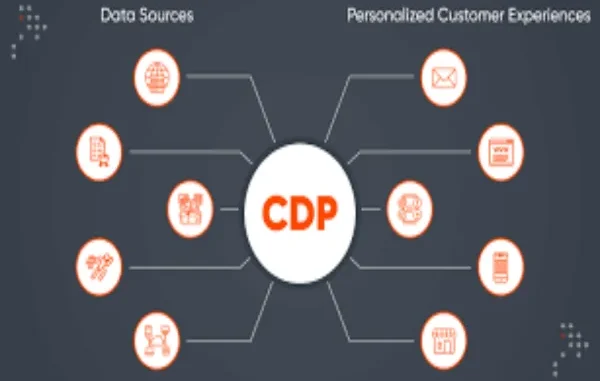
Businesses often send the same message to everyone. Emails, banners, and home pages feel generic. When content is irrelevant, people ignore it, unsubscribe, or leave a site. Engagement drops. Conversion rates fall. Teams waste budget on campaigns that do not connect.
Personalized content experiences are the clear solution. They let a brand show the right message to the right person at the right time. With simple signals—like what someone bought last month, where they live, or how often they open an email—content becomes useful. It feels chosen, not thrown together. Here are some key customer data points that companies can use for better personalization.
Key Customer Data Points
Demographics
Basic characteristics such as age, gender, and householder size help to drive tone and offer. For example, a 28-year-old who lives by himself is unlikely to see the same offers as someone who is the parent of three kids. Demographics alone can raise headline relevance and, in many cases, can begin to guide through to more relevant messages.
Purchase History
Previous purchases give an indication of preferences and likely future purchasing. If a customer bought a blue jacket on June 2, a site can show care instructions, or similar matching accessories, or something that resembles the same blue jacket. Teams that lead with previous purchases in product feeds frequently see greater return visits and a better experience engaging with personalized content.
Browsing Behavior
Page views, time on page, and items added to the cart are signs of intent. Browsing habits often indicate what someone is going to want next. When product lists mirror something someone has recently viewed, the conversion opportunity increases and enables sites to deliver more relevant, personalized content experiences.
Engagement Patterns
How often someone opens messages, clicks on links, or returns to the app tells how engaged they are. Frequent openers could receive timely, quick bursts of information updates; less active users would likely receive re-engagement offers. Segmenting by engagement level is a quick way to customize the frequency of messages and tone, which leads to an overall better content experience with more personalized content.
Location
City, postal code, or region guides content such as local events, store hours, or weather-related recommendations. A customer in Mumbai may see rain-ready items in July, while someone in Pune sees different seasonal picks. Geo-targeted messages, for sale days or in-store stock notices, are a common form of personalized content.
Device Usage
Knowing whether a person uses a phone, tablet, or desktop helps format content. Mobile users prefer shorter text and larger tap targets; desktop users may handle longer articles and complex forms. Adapting layout and image sizes to a device makes the content feel native and improves engagement.
Search Queries
What customers type into a site search reflects urgent needs. Delivery search results that are directly aligned to those queries—or relevant tips for them—expedite decisions and reduce friction. Search-driven landing pages often produce conversions more quickly as well and can be optimized for personalized content experiences.
For example, if someone searches “black formal shoes,” the site surfaces size filters and a one-click buy option.
Email Interactions
Opens, clicks, and replies give direct signals about message relevance. A high click rate on recipes suggests a taste for cooking content, which can shift future newsletters toward meal ideas. Small changes in the subject line or send time based on these signals can raise open rates and sharpen personalized content experiences.
Customer Feedback
Reviews, chat messages, and survey answers contain explicit statements. If a customer says “prefer vegan options” in feedback, content can exclude products that don’t match. Acting on fast feedback cycles closes the loop and supports better personalized content experiences.
Loyalty Status
Tier, points, and recent redemptions influence offers. A silver member may see welcome-back discounts; a gold member gets early access to limited drops. Loyalty-aware messaging keeps top customers engaged and rewards repeat behavior through more tailored, personalized content experiences.
For example, a gold-tier customer gets first access to a new collection and a short lookbook in the app.
Each point alone is useful. Together, they form a clearer picture. For instance, demographics plus purchase history and email behavior might show that a 45-year-old in Kolkata buys gardening tools and opens weekend emails—so send a short guide about seasonal planting on Friday. That single note is practical and personal.
Practical Tips for Teams
- Start small. Choose three data points to test within a month. Measure simple things: click-through rate, time on page, or repeat visits. Try one small scenario per week and track results. Document lessons and share a short monthly note so teams learn what works.
- Respect privacy. Collect only what is needed and be clear about why the data is used. A transparent note on a sign-up form—for example, “show local offers and tips”—helps set expectations.
- Keep content short and useful. A brief subject line, a clear image, and a single CTA work well on phone screens. On a desktop, a longer explainer can live on a product page.
- Make it routine. Review which data points move metrics every quarter. Drop what doesn’t work and scale what does. Small changes add up over months.
Bottom Line
Clear signals from customer data make content matter. When teams use demographics, purchase history, browsing behavior, engagement patterns, location, device usage, search queries, email interactions, customer feedback, and loyalty status, messages become timely and relevant. Personalized content experience increases trust and often raises conversion by small but steady amounts. With steady testing and respect for privacy, brands can build lasting engagement.
These steps are practical, repeatable, and based on signals teams already collect. Small experiments build confidence; over time, they create measurable change across channels and teams.






Leave a Reply